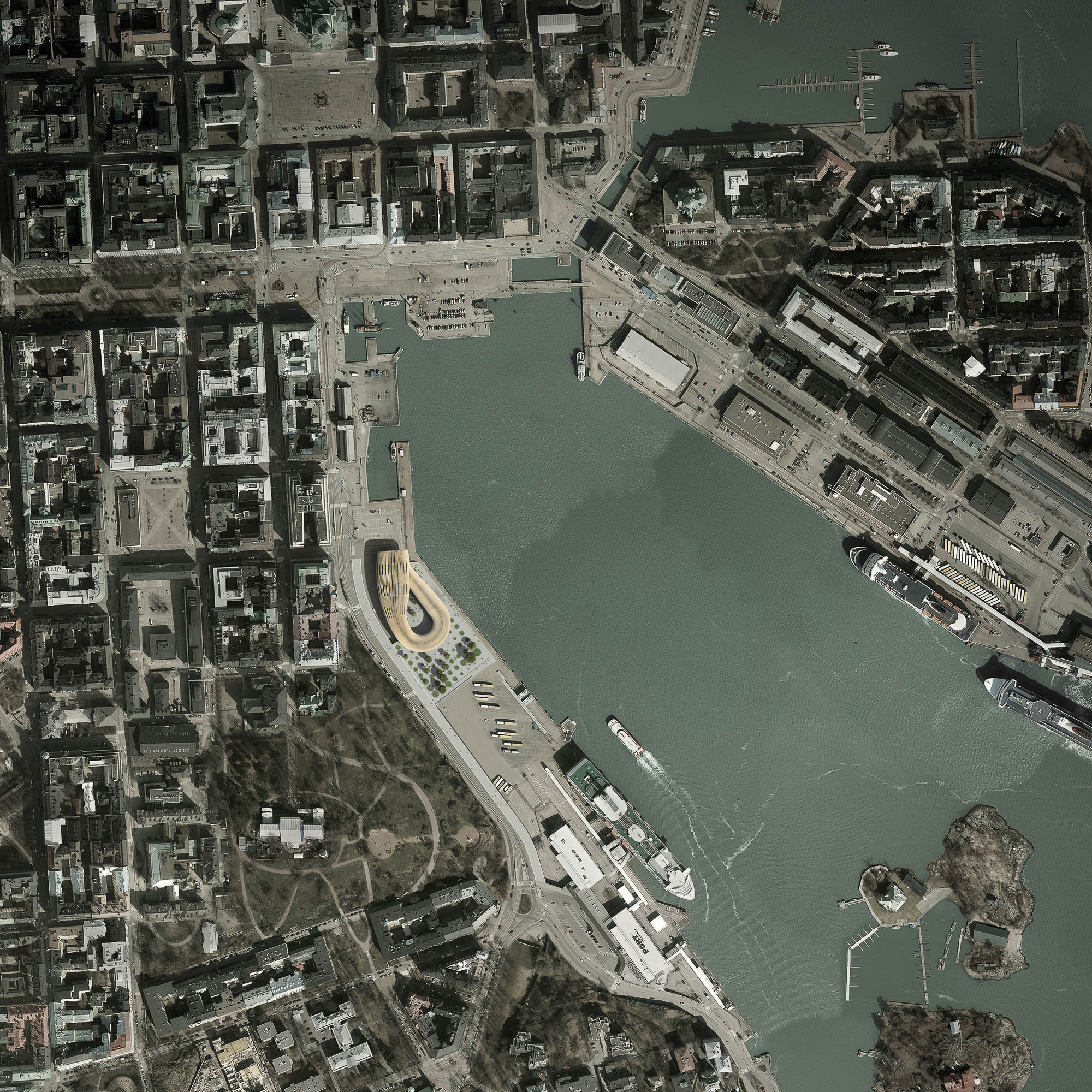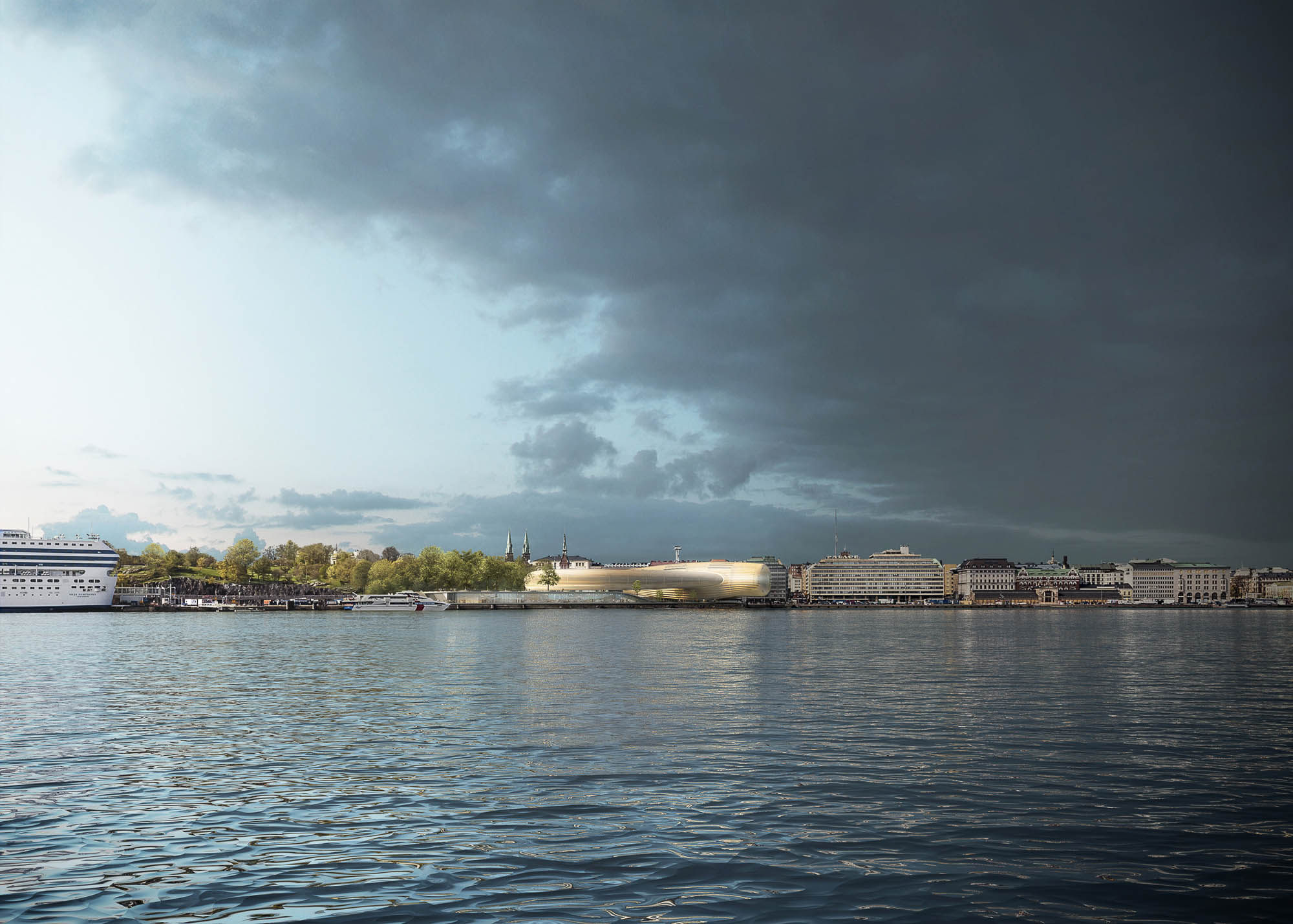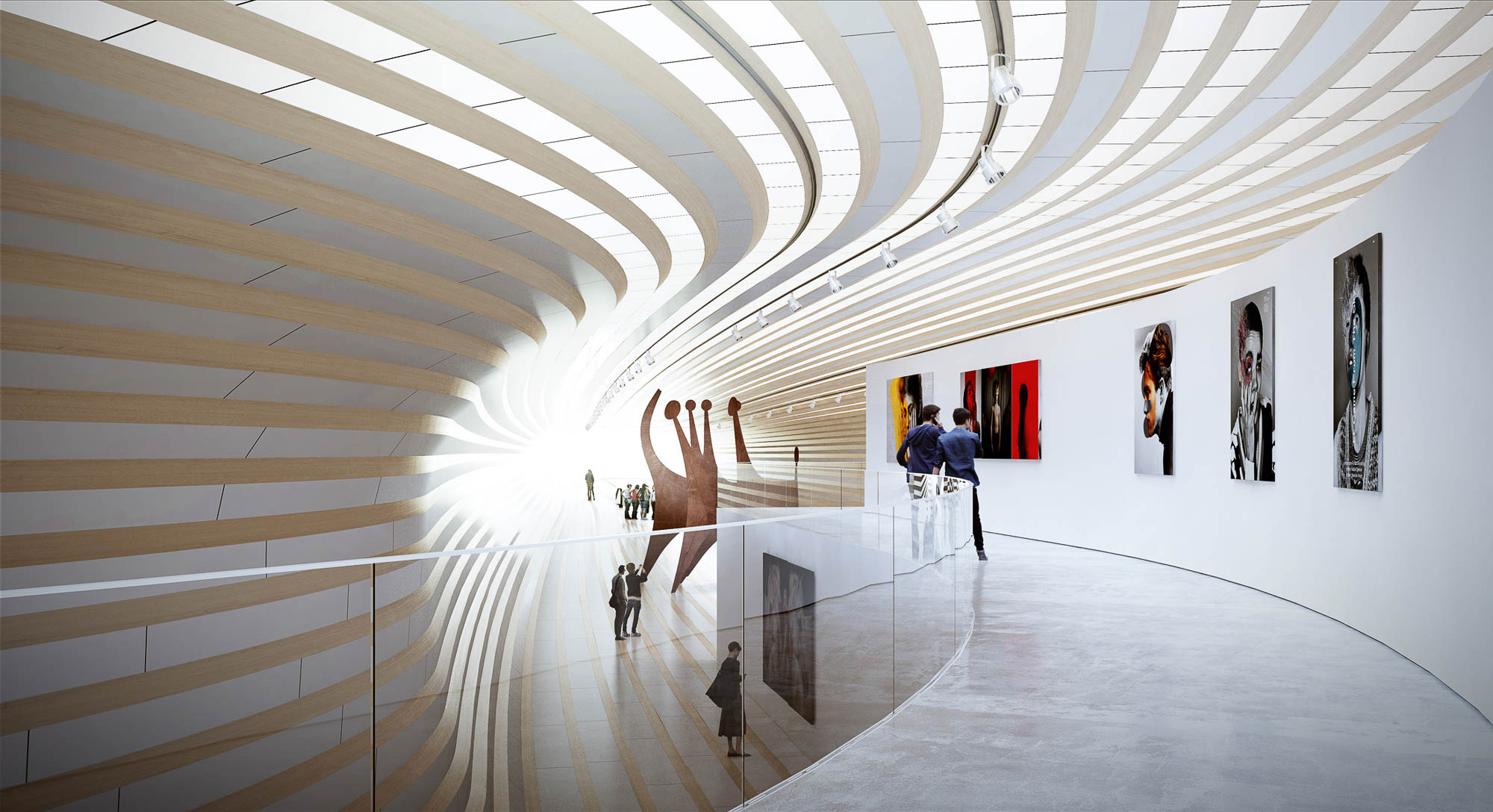In order to celebrate Nordic ideals such as openness ad accessibility, and to emphasize the strong connection between the museum , the historic city and the harbor, the form and organization of the building are inspired by the mathematical model of the Klein Bottle, a non-orientable, single sided, boundary-free surface where the inner and outer faces are seamlessy interconnected – exterior becomes interior and vice versa. In other words, a container that can contain itself.
The form of the building induces a strong emotional impact on the visitors, generating a sense of deep attraction, curiosity, wonder. The distinctive imploded-like funnel shape form of the façade will draw visitors towards the building, curious to see how it continues inside. As visitors move inside, the traditional Cartesian and Euclidean space is negated by the continuity between floor, walls and ceiling -all conceived as one. The exhibition path is a loop that emphasizes the “endless” nature of the form.
The continuity between the outer and inner surface is particularly emphasized by the use of local timber inside and outside the building. The structure is an exposed gridshell exoskeleton formed by a double layer of curved laminated timber beams joint together by a series of steel cross beams. The longitudinal arrangement generates a very dynamic linear pattern that emphasizes the geometry and fluidity of the space. Furthermore, the expression of the timber beams convey a Finnish touch to the design, celebrating the use of this material and linking back to the work of Alvar Aalto and modern finnish design.
Diffused sunlight fills the space through a series of central skylights, illuminating the assessment of exhibits below and creating a soft and light – almost cocoon-like environment.
DATA
Client: Solomon R. Guggenheim Foundation
Use: Museum
Bldg. Area: 12,100 m2
Status: International design competition
CREDITS
Architect: LUCA POIAN FORMS
Visualization: ENGRAM Studio





